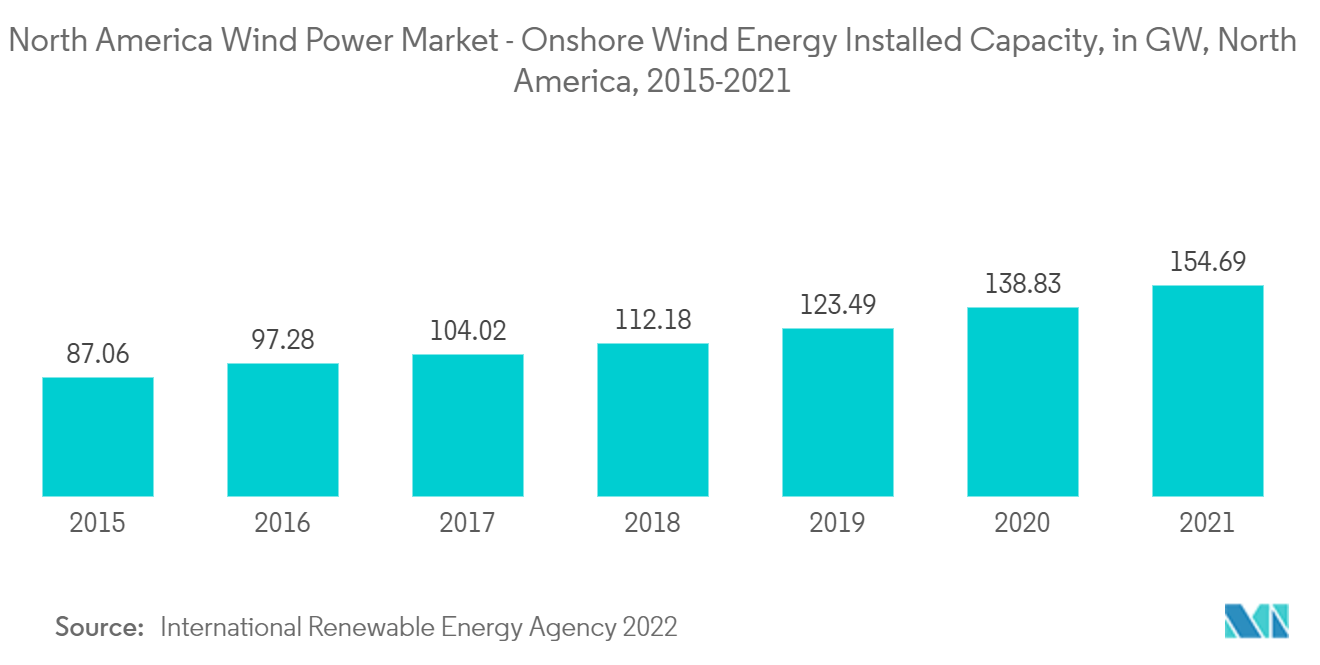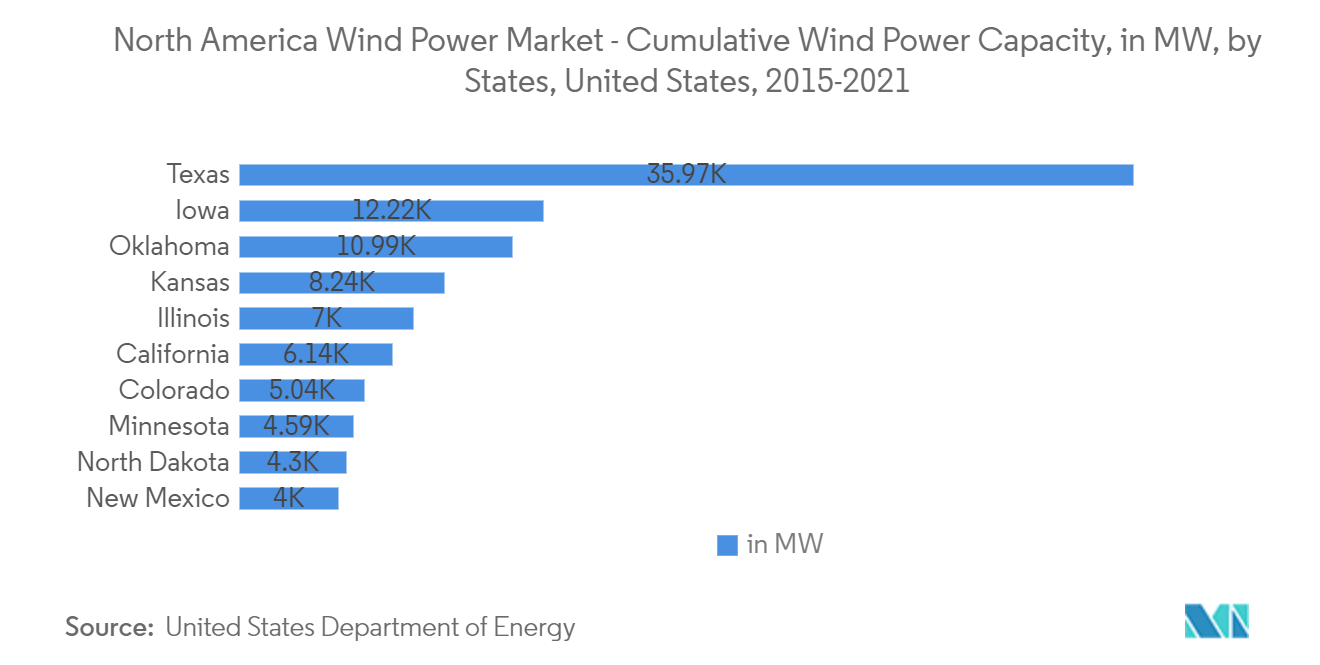Market Trends of North America Wind Power Industry
This section covers the major market trends shaping the North America Wind Power Market according to our research experts:
Onshore Segment to Dominate the Market
- Onshore wind energy power generation technology evolved over the last five years to maximize electricity produced per megawatt capacity installed to cover more sites with lower wind speeds in North America.
- Onshore wind additions in North America have decreased by 21% compared to the enormous growth rates seen in 2020. However, according to the Global Wind Energy Council (GWEC), in total, 46.5 GW of onshore wind capacity is expected to be added in the next five years in North America, of which 90% will be contributed by the US, and the remaining will come from its neighbor Canada.
- With the increasing need for an affordable, clean, and diverse electricity supply, the government and utilities across the nation are considering wind power as a viable solution. Moreover, with the region's unparalleled wind resources, there are ample opportunities to maximize the economic and environmental benefits associated with wind energy development.
- In the year 2021, North American onshore wind energy installations accounted for 154.691 GW, of which the United States holds the major position accounting 132.696 GW, followed with Canada 14.304 GW. The decreasing cost of power generation and growing investments, particularly in the United States and Canada, are expected to drive the onshore wind turbine installation.
- Moreover, in June 2022, BluEarth Renewables started the construction of145 MW Hand Hills wind project, with a project cost of USD 250 million. The project, located northeast of Drumheller, Alberta, is estimated to start-up 2023 and will be able to supply clean energy to Alberta households.
- Owing to the above points and the recent developments, the onshore segment is expected to dominate the North America Wind Power Market during the forecast period.

United States to Dominate the Market
- The United States wind power sector is receiving immense support from the government due to the America First policy, which aims to boost domestic energy production. The offshore wind power sector is considered a major area of development, as the country has a large coastal area available for leasing.
- The country was the second-largest in total installed wind energy capacity, recording 134.3 GW of capacity in 2021, or more than 86% of North America's total wind energy capacity. In the United States, the net electricity generation from wind power reached 379.77 billion kilowatt-hours in 2021, which is about 9% of the electricity delivered in the year. Moreover, wind provided more than 20% of the electricity produced in ten states, namely Kansas, Iowa, Oklahoma, North Dakota, South Dakota, Nebraska, Colorado, Minnesota, New Mexico, and Maine.
- Also, in the year 2021, the country added around 132.738 GW of new wind power capacity. Also, a total of 19.4 GW offshore wind capacity was awarded worldwide through auctioning, of which 8.4 GW was in the United States (2.5 GW in New York, 2.7 GW in New Jersey, 1.6 GW in Maryland, and 1.6 GW in Massachusetts.
- Going forward, according to the American Wind Energy Association (AWEA), the wind power market witnessed significant growth in the total installed wind power capacity, and this increase in capacity was primarily driven by the ongoing and dramatic onshore wind boom in Texas. More than a quarter of the total wind capacity of the United States is in Texas.
- Also, according to the Department of Energy (DOE), offshore wind has the potential to generate more than 2,000 GW of capacity per year. Adding to this, the officials of the American Wind Energy Association have stated that around USD 70 billion of offshore wind power projects are in the pipeline and are expected to be completed by the year 2030.
- Also, in August 2022, The California Energy Commission announced the adoption of offshore wind energy preliminary planning goals ranging from 2,000 MW to 5,000 MW by 2030 and 25,000 MW by 2045, up from an initial proposed goal of 10,000 MW to 15,000 MW goal by 2045.
- Moreover, in November 2021, Orsted and Eversource selected Siemens Energy to Supply Transmission System for a 924-Megawatt Offshore Wind Farm. The plant is located 30 miles east of Montauk Point and will generate clean energy to power nearly 600,000 New York homes, and it is expected to be operational in 2025.
- Owing to the above points and the recent developments, the United States is expected to dominate the North America Wind Power Market during the forecast period.


